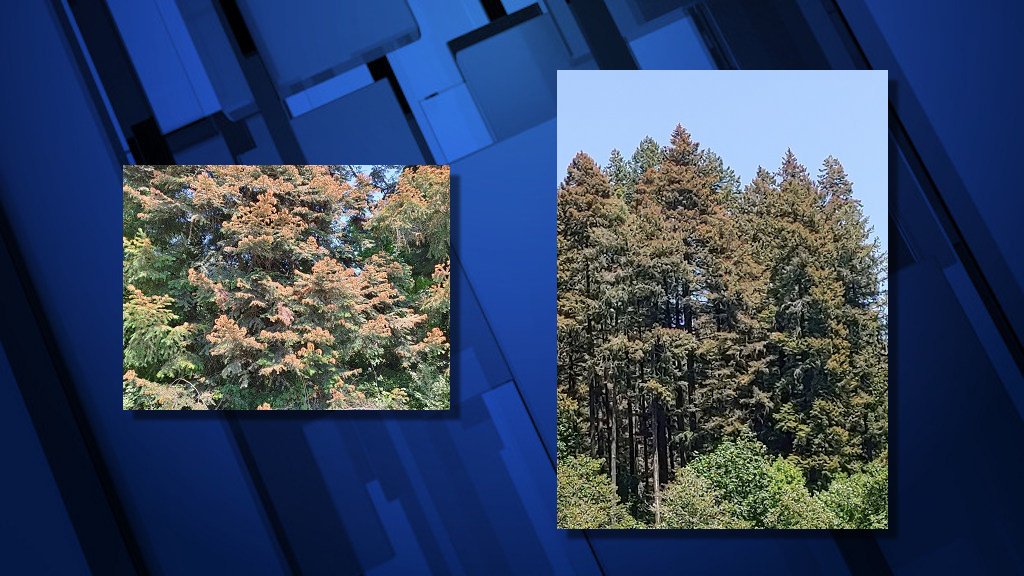Drought-stressed Oregon trees were scorched in heat wave

BEND, Ore. (AP) — This summer’s heat scorched Oregon trees — maybe worse than ever before — and scientists are beginning to piece together what that means for the trees’ long-term health.
Reports of fading foliage and crispy conifers started coming within days of a June heat wave, during which many parts of the state endured consecutive days with temperatures higher than 110 degrees Fahrenheit (43 degrees Celsius).
Aerial surveys from the U.S. Forest Service, Oregon Department of Forestry and Washington Department of Natural Resources documented tree scorching on about 229,000 acres (92,673 hectares) in Oregon, Oregon Public Broadcasting reported. That’s likely an undercount, given the method’s limitations.
“By some estimates, it’s probably the largest scorch event in history,” Oregon State University researcher Christopher Still told OPB’s “Think Out Loud” this week. “I mean this is a new thing for us to be seeing on Earth, so it’s sort of a dubious milestone.”
Researchers like Still, with help from citizen scientists, have spent months documenting the heat wave’s effects on Oregon’s trees.
People submitted pictures of ailing arbors to an online database, which researchers used to help analyze the damage. The images showed deciduous trees with browning, crunchy leaves, and some even looked like they were melting, Still said. Conifer needles turned bright orange and in some cases fell off entirely.
Most of the scorching happened on the south- and west-facing sides of trees, which endured the most intense sunlight. Satellite images were even able to pick up the burnt edges.
Western hemlock and western redcedar suffered the worst damage. Younger trees also fared worse than older ones.
“There is going to be an impact, I think, going forward, if this young generation had lots and lots of mortality, which we think it did,” Still said. “The older trees, they’re going to be more resilient, but it’s a little bit hard to know if you lose a bunch of your needles what that does to you.”
Toasted trees were already stressed from the adverse effects of extreme drought, which in recent years has contributed to tree declines. Still said the combination of drought and heat is a “knockout punch” for trees.
Those effects are likely to get worse as unchecked burning of fossil fuels drives climate change, which is expected to lead to more extreme heat events as well as longer, more intense periods of drought.
“If this just keeps going, if these are happening every five or 10 years, it’s gonna be really grim I think for most of the forests of the Pacific Northwest,” Still said.